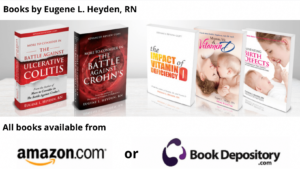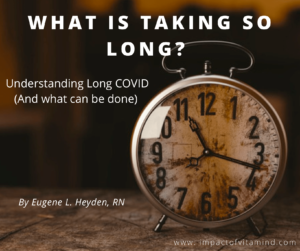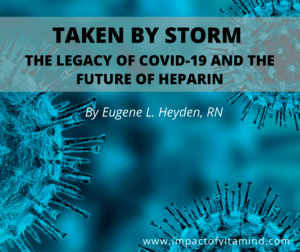Natto-Serra and the Challenge of Long COVID

Download a PDF of entire article
By Eugene L. Heyden, RN
Introduction
The symptoms of long COVID are multifarious and include breathlessness, fatigue, chest pain, myalgia, cognitive dysfunction, innate immune responses coupled to inflammatory cytokine production, and a pro-coagulant state. ~Kell et al., 2022, emphasis added)
Ongoing vascular endothelial damage promotes platelet adhesion and coagulation, resulting in the impairment of various organ functions. Meanwhile, thrombosis will further aggravate vasculitis contributing to further deterioration. Thus, long COVID is essentially a thrombotic sequela. ~Wang et al., 2022, emphasis added
Simply put, and in view of the above, the challenge of Long COVID is the challenge of dealing with all the clotting that is occurring, silently, underappreciated—negatively impacting a life, perhaps your life.
And what is driving it all? All the clotting? All the harm? I believe we have found the answer. In long COVID there is a persistence of spike protein, the protruding portion of the virus that serves to attach to and infect the target cell. They are just not going away! And there must be a ton of them hanging around, post-infection, just waiting to stir up trouble.
When comparing patients with post-COVID symptoms and patients without, we found that Spike protein and viral RNA were more likely to be present in patients with PASC [Long COVID] and in some cases at higher levels compared to acute COVID-19 patients. We also observed that the percent positivity of circulating viral RNA increased in the PASC positive individuals compared to acute COVID-19 group while Spike protein positivity remained the same. (Craddock et al., 2022, emphasis added)
Oh, but there is more!
We report that both viral RNA and/or Spike protein remain in circulation long after acute infection (more than one-year post-infection in some cases) and this persistent circulation of viral components is associated with PASC [AKA Long COVID]. (Craddock et al., 2022, emphasis added)
We will assume it is you who is the victim here. During your COVID infection, you were exposed to a lot of viruses and a lot of spike protein. Not particularly pleasant, but thankfully you survived. And now you have lingering symptoms, likely most distressing, and are left wondering what is going on. It looks you are in it for the long haul.
Or perhaps your brush with death was barely noticeable, as some cases of Long COVID arise out of the mildest of cases (Crook et al., 2021). Whatever the case may be, in Long COVID there is continued exposed to spike protein, all hidden from view. And although the virus has been vanquished, parts of it remain, namely the spike protein (Craddock et al., 2022; Patterson et al., 2022; Kell et al., 2022). Spike protein exposure, as we are now learning, stimulates clot formation which, in turn, creates blockages within the microcirculation (i.e., capillaries) (Kell and Pretorius, 2022). And because of this, you get to remain ill—experiencing an array of symptoms that can easily be attributed to impaired oxygenation at the tissue and cell level (Kell et al., 2022). Certainly, there is something that can be done to address all of this. We’ll explore the possibilities here. But first, a little review is in order.
To continue reading, click here: Natto-Serra/Long COVID
Download a PDF of entire article
Related posts (Click image to open)
References
Craddock V, Mahajan A, Krishnamachary B, Spikes L, Chalise P, Dhillon N. Persistent Circulation of Soluble/EV-Linked Spike Protein and Viral RNA in Individuals with Post-Acute Sequelae of COVID-19. EV-Linked Spike Protein and Viral RNA in Individuals with Post-Acute Sequelae of COVID-19. https://papers.ssrn.com/sol3/papers.cfm?abstract_id=4186787
Crook H, Raza S, Nowell J, Young M, Edison P. Long covid—mechanisms, risk factors, and management. bmj. 2021 Jul 26;374. https://www.bmj.com/content/374/bmj.n1648.abstract
Kell DB, Pretorius E. The potential role of ischaemia–reperfusion injury in chronic, relapsing diseases such as rheumatoid arthritis, Long COVID, and ME/CFS: evidence, mechanisms, and therapeutic implications. Biochemical Journal. 2022 Aug 31;479(16):1653-708. https://portlandpress.com/biochemj/article-abstract/479/16/1653/231696
Patterson BK, Francisco EB, Yogendra R, Long E, Pise A, Rodrigues H, Hall E, Herrera M, Parikh P, Guevara-Coto J, Triche TJ. Persistence of SARS CoV-2 S1 protein in CD16+ monocytes in post-acute sequelae of COVID-19 (PASC) up to 15 months post-infection. Frontiers in Immunology. 2022:5526. https://www.frontiersin.org/articles/10.3389/fimmu.2021.746021/full?s=09
Pretorius E, Vlok M, Venter C, Bezuidenhout JA, Laubscher GJ, Steenkamp J, Kell DB. Persistent clotting protein pathology in Long COVID/Post-Acute Sequelae of COVID-19 (PASC) is accompanied by increased levels of antiplasmin. Cardiovascular diabetology. 2021 Dec;20(1):1-8. https://link.springer.com/article/10.1186/s12933-021-01359-7
Wang C, Yu C, Jing H, Wu X, Novakovic VA, Xie R, Shi J. Long COVID: The Nature of Thrombotic Sequelae Determines the Necessity of Early Anticoagulation. Frontiers in Cellular and Infection Microbiology. 2022;12. https://www.ncbi.nlm.nih.gov/pmc/articles/PMC9016198/
DISCLAIMER: This article is offered solely for informational purposes. The information contained therein and opinions expressed should be evaluated for accuracy and validity in the context of opposing data, new information, and the views and recommendations of a qualified health care professional, and not to be substituted for professional judgment and guidance or to provide a reason to neglect or delay appropriate medical care for self or for others. It is the reader and reader only who bears the responsibility for any actions that could be construed as being a response to the information presented. The statements and opinions expressed by the author have not been reviewed or approved by the FDA or by any other authoritative body, nor is the author endorsing any product or specific therapy mentioned. This article and the opinions contained therein are offered to the reader to broaden his or her understanding of the issues discussed and to help identify options that may be suitable for the individual to pursue, on behalf of self or others, under approval and direction of a qualified physician or medical team member. All questions of a medical nature which arise from reading this article should be directed at qualified health care professional. There are no guarantees that a suggested website and internal links are safe to visit or open or are currently available.
Copyright © 2022 Eugene L. Heyden, RN
All Rights Reserved




